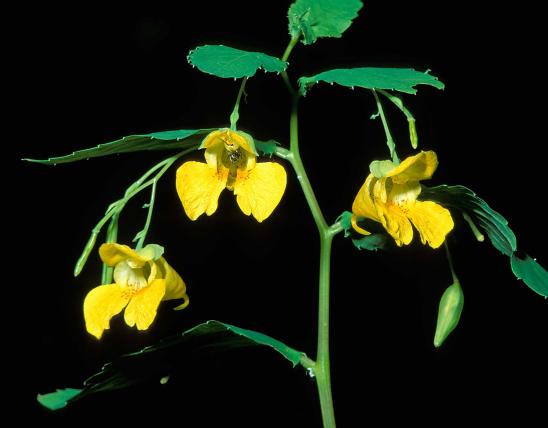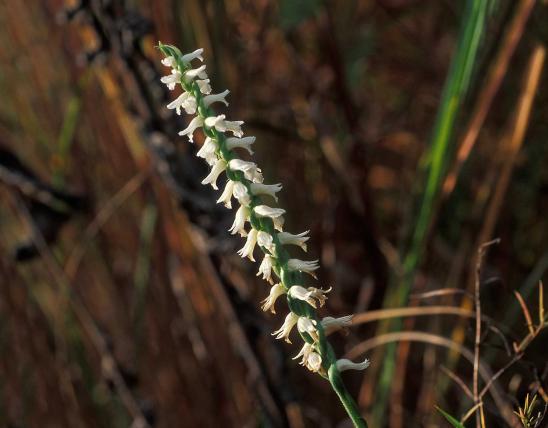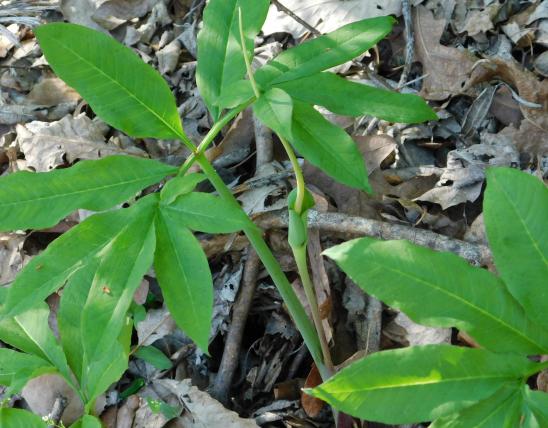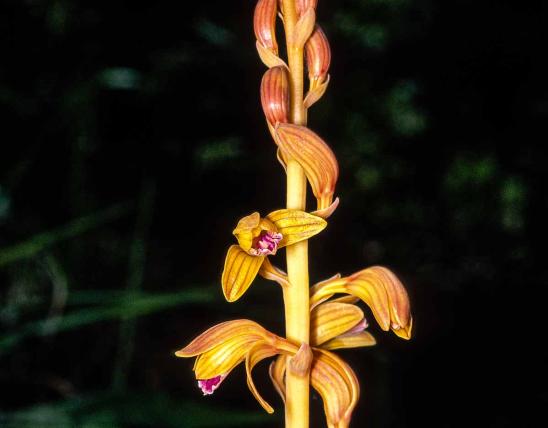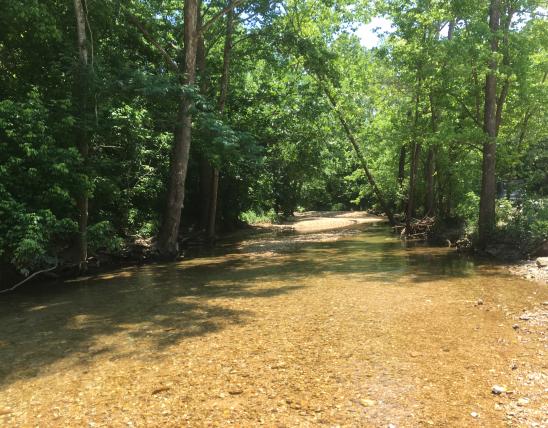
Yellow lady’s slipper is a beautiful perennial orchid frequently growing in colonies. Flowers have three long, brown, twisted “flags” — the upright one being a sepal, the other two, on either side of the “slipper,” being two lateral petals. The bright yellow slipper, or lip, is a third, modified petal. The petal-like structure behind the lip is actually a pair of fused sepals. Thus there are 3 sepals and 3 petals. Blooms April–June. Leaves broad, prominently parallel-veined, clasp the stem, to 6 inches long, sharply pointed, hairy.
We have two subspecies in our state:
- Small yellow lady’s slipper (var. parviflorum) has a lip ¾–1 inch long, flags reddish purple to brown, and 4–6 leaves per stem; it is shorter, less hairy, and grows in western and southern Missouri.
- Large yellow lady’s slipper (var. pubescens) has a lip 1–2¼ inches long, flags yellowish green with purplish streaks, and 3–4 leaves per stem; it is taller, hairier, and grows in eastern Missouri.
Similar species: Two other species of lady’s slippers grow in Missouri; neither is yellow; both are rarer than yellow lady's slipper and are Missouri species of conservation concern:
- Showy lady’s slipper (C. reginae) has white flowers with sepals and lateral petals that don’t twist; the lip is pink- or purple-tinged.
- Small white lady’s slipper (C. candidum) has flowers whose purplish or brown-tinged “flags” twist; the lip is white with purplish streaks on the inside surface. It is rare and found in only one location in extreme southern Missouri.
Height: to 2 feet (var. pubescens); var. parviflorum is shorter.

Scattered nearly statewide; absent from the Mississippi Lowlands. The smaller variety, parviflorum, grows in western and southern counties. The hairier and taller variety, pubescens, grows in eastern Missouri.
Habitat and Conservation
Grows in upper and middle elevations of wooded slopes of ravines and stream valleys, facing north or east, in acid soils in rich upland forests.
Status
Most orchids are declining. Habitat destruction for logging, grazing, and conversion to pasture causes much of the loss. Root diggers also damage populations, selling the roots as garden plants or as medicinal herbs, even though the folkloric basis for thinking it useful as a drug hardly justifies wiping out these plants. Collecting orchids for gardening is perhaps the saddest reason for their decline, since it is no secret that lady’s slippers nearly always die upon transplanting.
Human Connections
Touching this plant can cause a skin rash in some people.
The genus name, Cypripedium, comes from Greek and Latin references to the goddess of love (Aphrodite or Venus) and “sandal.” The species name, calceolus, is from the Latin calceus, meaning “small shoe.” The two subspecies names are less fanciful: pubescens refers to the subspecies' distinctive hairiness, and parviflorum means "small-flowered," which is a distinctive trait of that subspecies.
Most orchids are declining, usually due to human activities. Cora Steyermark wrote, “Anyone who has any conception of the struggle an orchid must undergo to perpetuate itself would leave any member of this family in its natural habitat.”
Ecosystem Connections
Like other orchids, the intriguing form of the flowers is related to its use of pollinating insects. In this case, the flower has a special, one-way, almost maze-like route for its pollinators. Flower flies (syrphids), megachilid bees, beetles, and other pollinators must squeeze into the flower and cannot turn around to exit the way they came in; to leave, they must brush past the stigma (depositing any pollen on its body acquired from another flower), then rub past the flower’s own pollen masses before exiting.
The usual pollinators for lady’s slipper orchids are various smaller bees, beetles, and flies, which are deceived into visiting the flowers by color and fragrance; the flowers offer no rewards to insects. Occasionally, larger insects, such as bumblebees and moths, will enter the lip but are too large to pass through the exit holes and sometimes become trapped and die.
It is difficult to propagate lady's slippers horticulturally. One big reason is that although a single fruiting pod may produce thousands of seeds, the tiny seeds have a low rate of germination and require the presence of particular kinds of beneficial soil fungi in order to survive for even a brief while. Additionally, they germinate and mature slowly; a plant usually needs to grow for several years before it produces flowers. This helps explain why most lady’s slippers occur in colonies: they are reproducing asexually, via spreading rhizomes (rootstocks). But attempting to transplant them usually fails, because all orchids have obligate relationships with soilborne mycorrhizal fungi and do not tolerate environmental changes well. And once a population is wiped out, it does not come back.







































